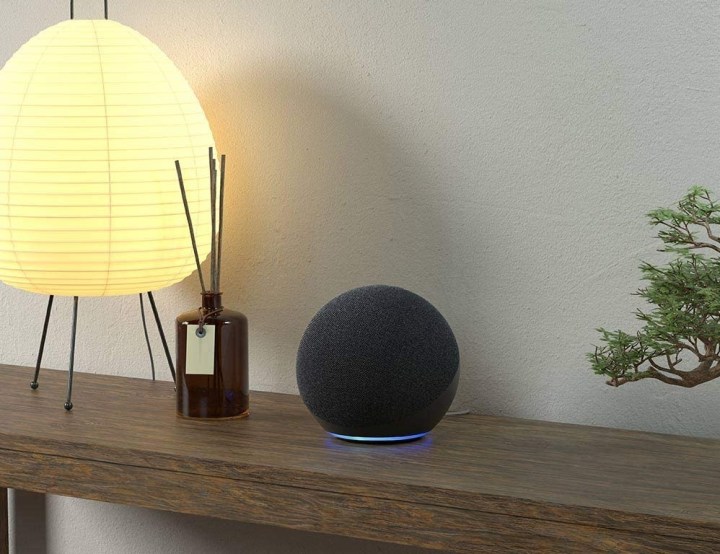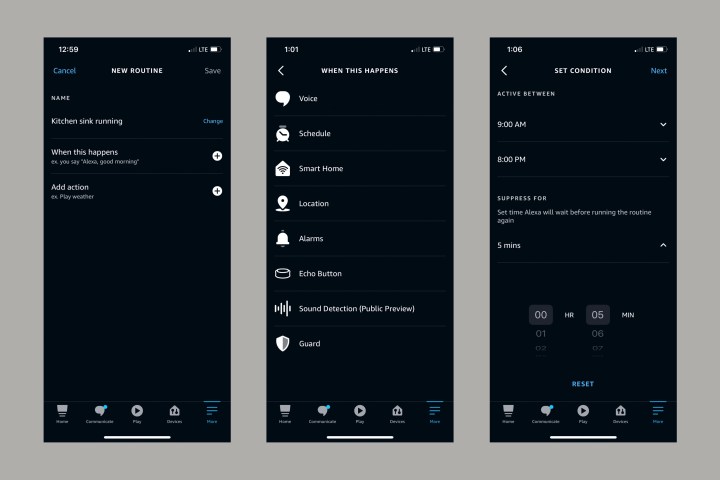Amazon Alexa is more than just an omnipotent voice that lives inside your household's Echo speakers. The all-knowing, all-powerful voice assistant can control and manage most, if not all, of your smart home devices, help you organize your schedule, and provide answers to whatever pressing questions are on your mind. And the best part? Alexa is always being upgraded.
In fact, the voice assistant can now recognize a series of new environmental noises -- specifically, the sound of running water and beeping appliances. It's part of an expansion to Alexa's Sound Detection ability.
What is Sound Detection?
Introduced in June 2021, the feature initially allowed Alexa to listen for the sounds of a baby crying, a dog barking, snoring, and coughing. Programmed and enabled as part of an Alexa Routine, Sound Detection can be implemented in a number of useful ways.
Let's say that your Echo speaker's far-field mics pick up on the sound of snoring. As part of your Sound Detection Routine, once Alexa hears snores, the device will automatically be turned off while white noise plays from your bedside Echo Dot to help you fall asleep. Or, let's say that you've got

How to build a Sound Detection Routine
As part of a series of new features introduced to the Alexa voice assistant, there are two new Sound Detector noises that
Let's say you're out and about but have a load of laundry in the washer back at home. With Sound Detectors built into your Alexa Routines, you can program the Echo speaker near your laundry room to listen for the washer's "finish" chime. After hearing the noise,
With the ability to listen for running water, you can have an Echo speaker programmed to send an alert to your phone if it thinks your kitchen sink has been running for too long.
Building an Alexa Routine for Sound Detection is a straightforward process, and we've put together this helpful step-by-step guide to walk you through it.
Step 1: Grab whatever mobile device you're using the Alexa app on. Launch the app, then tap the More button at the bottom of the home screen.
Step 2: Select Routines from the list of available options, then tap the Plus icon in the top-right corner of the Routines page.
Step 3: Next, you'll need to create a name for your Routine. In the case of specific Sound Detectors, you could go with something like "kitchen sink running."
Step 4: Tap on the When this happens field and select Sound Detection. Then, you'll need to choose which sound you want your Echo device to listen for.
On this same screen, you'll also be able to adjust the hours that your Echo device will listen for the sound you've chosen and how long the speaker will wait to alert you once it has detected the noise.
At this time, you can only have one Sound Detector Routine programmed to one Echo device at a time.
Step 5: The only thing left to do is to choose a Routine response for your Echo device. After selecting Add Action, you'll be able to tell Alexa what to do after hearing a Sound Detection noise. This can be anything from sending you a notification to calling another family member.

Step 6: After you've filled out all the appropriate fields, go ahead and tap Save in the top-right corner of the screen to complete your Routine. That's all there is to it.
From here, we recommend testing your new Routine out. In the case of running water, go turn on the sink and let it run. If everything goes according to plan, you should receive an Alexa notification (or
Editors' Recommendations
- Amazon’s Echo Pop smart speaker is 43% off, and it’s not even Prime Day
- What to do if your Amazon Alexa app is not working
- Best Amazon Echo deals: Save on Pop, Show, Dot, and Studio
- How to set up a pre-owned Echo Show smart display
- The 6 best Echo Hub tips and tricks




